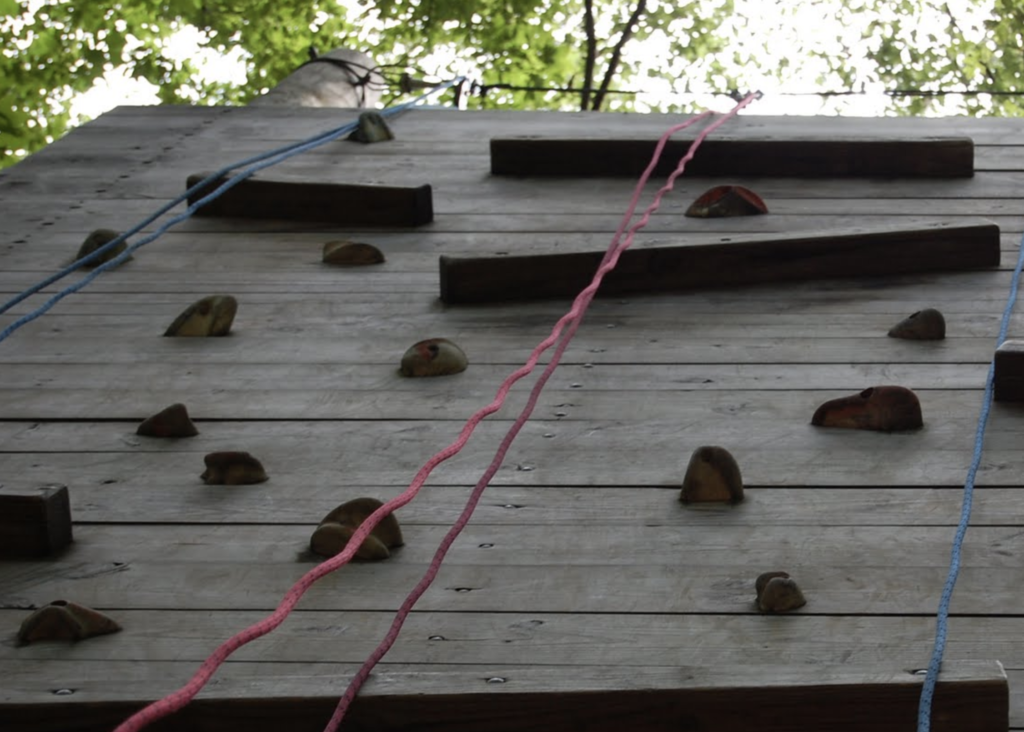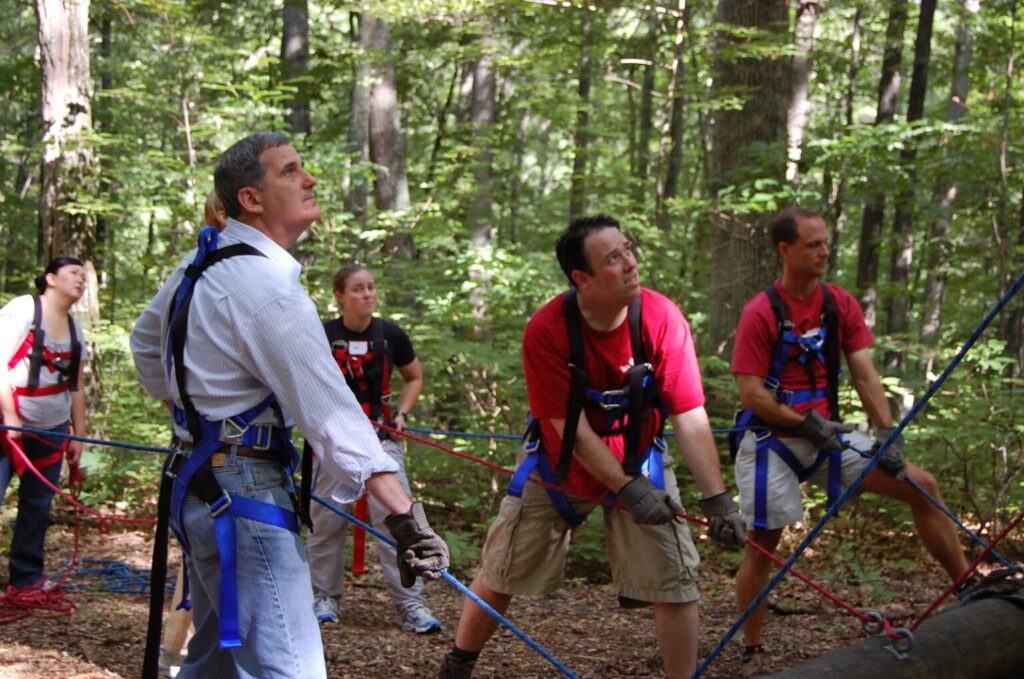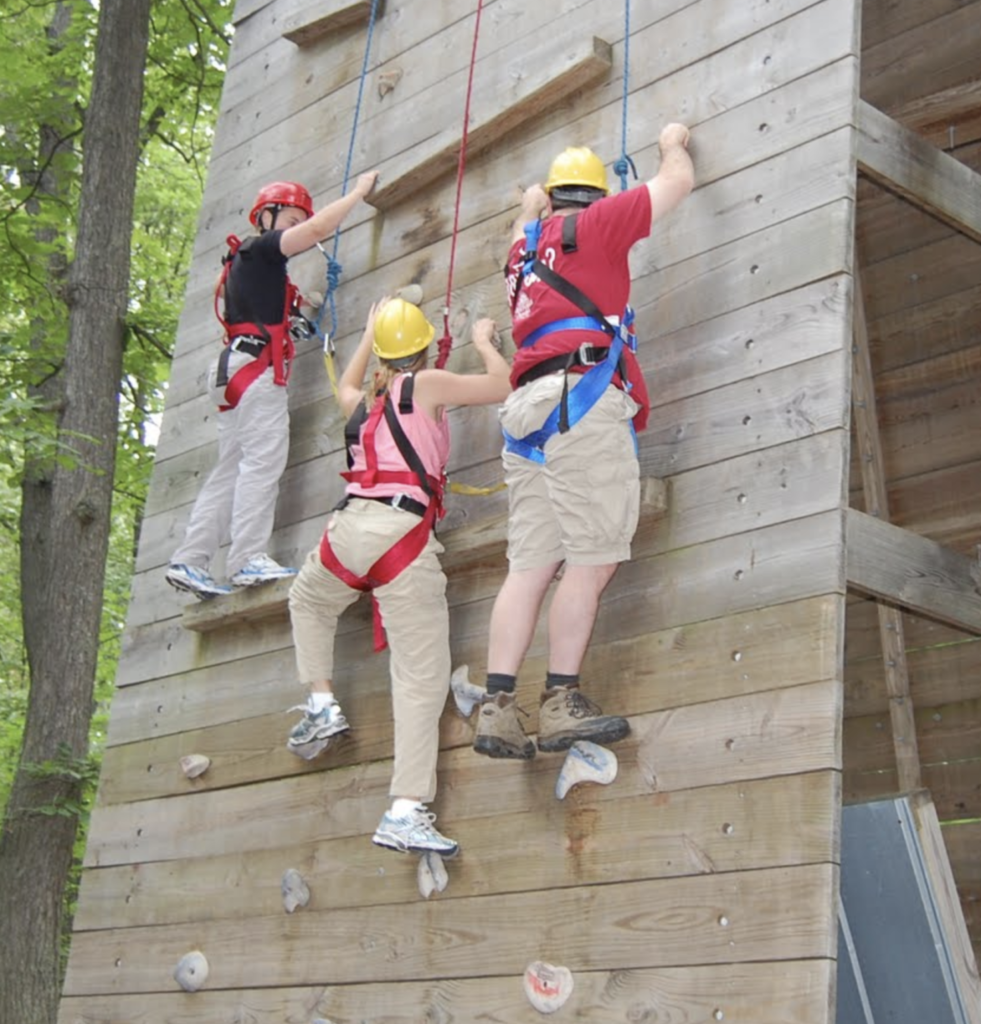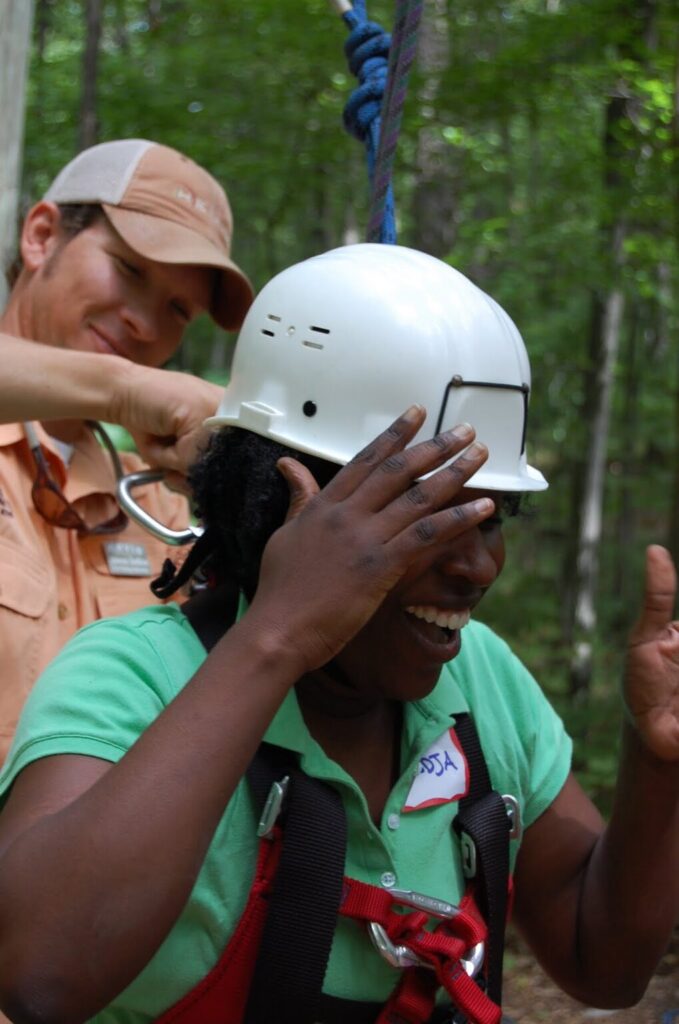In October 1984, I enlisted in the Navy straight out of high school in a small town in Southeast Georgia. After serving aboard the USS Francis Hammond (FF-1067) in Yokosuka, Japan (the land of my mother), I applied for a commissioning program and the Navy awarded me a scholarship to the University of Florida where I earned my degree in Material Science and Engineering. Upon my commissioning, I served as a Fire Control Officer and Navigator aboard USS O’Ban non (DD-987) in Charleston, South Carolina. and Mayport, Florida, and as Cruise Missile Training Officer in San Diego, California. After back-to-back sea tours, I wanted to broaden my horizons beyond Surface Warfare so I lateral transferred to the Public Affairs Community. I served as the P.A.O. for the USS John C. Stennis (CVN-74), which deployed for Operation Enduring Freedom after 9/11, and as the Public Affairs Officer for Bethesda Naval Hospital (now Walter Reed) where a generation of warfighters healed and moved on. After Bethesda, I was assigned to The Office of the Secretary of Defense where I served as a spokesman for detainee affairs in Guantánamo Bay, Cuba. There wasn’t a single day that I wasn’t answering a media query about the health and well-being of our Gitmo detainees, and after two years of shuffling back and forth from D.C. to Camp Delta, I was ready to return to military medicine. I served as the P.A.O. for the Surgeon General of the Navy, an assignment that required a lot of traveling to visit our medical forces in the U.S. and abroad. My final duty was as a P.A.O. for the U.S. European Command and NATO’s Supreme Allied Commander where I got to do a lot of traveling in Europe as well as visit our troops in Afghanistan. By then, I was both burned out and washed out and my marriage fell apart due to the stressors of the military, and in Nov. 2009, I retired with 20 years of combined service.
I was ready to reboot and start a brand new career in the private sector. Thankfully, the Veterans Affairs offered generous G.I. Bill education benefits, so I applied to the George Washington University School of Business hoping to incorporate my experience and appreciation with social media in my career. I enrolled in the Executive MBA program, a degree where I fit in because it was targeted to senior managers who were already in the workforce. The school was in high demand due to the great recession as many unemployed decided to return to school. Before the semester started, our cohort of 20 eager students embarked on a five-day retreat at the Homestead Resort in Hot Springs, VA.
We were attending sessions that didn’t require powerpoint or pointers, but still had everything to do with leadership development. Because the truth is, you can’t learn management from just inside a classroom.
After spending two days engaged in team-building exercises and thought-provoking discussions, we were ready to get some fresh air. The next morning, we hiked down the Allegheny Mountain gorge trail, through the thick forest, past the lovely cascade falls until we arrived in the middle of a grassy field with a gigantic wall affectionately known as the Tower. At first glance, the 40-foot Tower seemed daunting and insurmountable.

Throughout life, we face many obstacles both personal and professional. The key to responding to these roadblocks is to face them head-on and to rely on the support from others around you. This is teamwork — being supported and supporting each other. To work as a team, it’s imperative to understand each other’s strengths and weaknesses, both physically and mentally. The better we know one another, the better we’re able to assist each other.
The Ropes Course is a metaphor for problem-solving — it challenges us to face our fears and climb on. The higher you climb, the more you rely on your team for support.
The first task was to have each person assist their team members in donning their harnesses — the one crucial piece of equipment that would ensure our safety and protection.

Then each three-member team ascended in tandem facing the challenge of not having enough steps for all three to ascend at the same time. Sometimes a climber would have to take a step down in order for another climber to proceed. That was ok, as long as they all reached their final goal together.
Meanwhile, the rope handlers kept a close eye on the climbers, coaching them on where to place their hands and feet and providing support and encouragement so that the 3-member team could ascend up to the top together and then back down.
When it was my turn to go, I knew I could rely on my teammates Senodja Walker and Amir Moore.
Rope team:
“Senodja, place the right hand on the block and your left foot on the step.”
“Amir, move your right foot off the step and place it on the block so that Senodja can place her foot on it.”

As the climbers moved up the wall and then back down, the Belay teams were tasked to remove the slack by paying out or pulling in the excess line. They kept a close eye and a taut line, but they were not allowed to pull the crew up the wall — the climbers had to figure this out on their own.
Climbers: “Slack!” (pay out a little rope.)
Belayers: pays out the rope and pauses to see if climbers ask again.
Eventually, all of us made it over the wall and back down, taking one step at a time. The journey in life is rarely simplistic and straightforward. If we keep striving, we will eventually reach our goals, even if we have to climb over life’s challenges, obstacles, and setbacks.

The EMBA class was broken down into five groups of four and we would remain in our group for the entire two years. One of the first projects that we worked on was the Airline Pilots Association. ALPA, with 53,000 members and 40 airlines in the U.S. and Canada, is the largest airline labor union in the world.
We were having a conference call on Skype when I touted the fact that airlines such as Jet Blue and Delta have successfully used Twitter and Facebook to promote their services and to provide updates on weather and flight cancellations.
“I’ve had it with you. Your solution to everything is always social media!” Eli my classmates exclaimed.
This wasn’t the first time he had said that and we always seemed to butt heads over the value of social media for building brand awareness and winning new customers.
I immediately slammed the phone down in disgust, ending the conference call.
The next thing I did was call Senodja on the phone. “I can’t work with Eli any longer — he’s so unaccepting of social media. I’m here to learn and broaden my horizon, not to clash heads with idiots who are operating in the stone age.”
“Wish you could join my team, but we’re already maxed out.”
“Then maybe I should try to understand his point of view better and discuss our differences.”
“Or perhaps you could transfer out of the EMBA and enroll in the Professional MBA program — it may take a little longer to complete but you’re offered a choice of a wide selection of classes and will be collaborating with a diverse myriad of people, many I’m sure value the virtues of social media.”
October 1984
I enlisted in the Navy, straight out of high school in a small town in Southeast Georgia., named Darien. After serving aboard the USS Francis Hammond (FF-1067) in Yokosuka, Japan (the land of my mother), I applied for a commissioning program and the Navy awarded me a scholarship to the University of Florida where I earned my degree in Material Science and Engineering. Upon my commissioning, I served as a Fire Control Officer and Navigator aboard USS O’Ban non (DD-987) in Charleston, South Carolina. and Mayport, Florida., and as Cruise Missile Training Officer in San Diego, California. After back-to-back sea tours, I wanted to broaden my horizons beyond Surface Warfare so I lateral transferred to the Public Affairs Community.
I served as the Public Affairs Officer for the USS John C. Stennis (CVN-74), which deployed for Operation Enduring Freedom after 9/11, and as the P.A.O. for Bethesda Naval Hospital (now Walter Reed) where a generation of warfighters healed and moved on. After Bethesda, I was assigned to The Office of the Secretary of Defense where I served as a spokesman for detainee affairs in Guantánamo Bay, Cuba. There wasn’t a single day that I wasn’t answering a media query about the health and well-being of our Gitmo detainees, and after two years of shuffling back and forth from D.C. to Camp Delta, I was ready to return to military medicine. I served as the Public Affairs Officer for the Surgeon General of the Navy, an assignment that required a lot of traveling to visit our medical forces in the U.S. and abroad. My final duty was as a P.A.O. for the U.S. European Command and NATO’s Supreme Allied Commander where I got to do a lot of traveling in Europe as well as visit our troops in Afghanistan. By then, I was both burned out and washed out and my marriage fell apart due to the stressors of the military, and in Nov. 2009, I retired with 20 years of combined service.
I was ready to reboot and start a brand new career in the private sector. Thankfully, the Veterans Affairs offered generous GI Bill education benefits, so I applied to the George Washington University School of Business hoping to incorporate my experience and appreciation with social media in my career. I enrolled in the Executive MBA program, a degree where I fit in because it was targeted to senior managers who were already in the workforce. The school was in high demand due to the great recession as many unemployed decided to return to school. Before the semester started, our cohort of 20 eager students embarked on a five-day retreat at the Homestead Resort in Hot Springs, VA.
We were attending sessions that didn’t require powerpoint or pointers, but still had everything to do with leadership development. Because the truth is, you can’t learn management from just inside a classroom.
After spending two days engaged in team-building exercises and thought-provoking discussions, we were ready to get some fresh air. The next morning, we hiked down the Allegheny Mountain gorge trail, through the thick forest, past the lovely cascade falls until we arrived in the middle of a grassy field with a gigantic wall affectionately known as the Tower. At first glance, the 40-foot Tower seemed daunting and insurmountable.
Throughout life, we face many obstacles both personal and professional. The key to responding to these roadblocks is to face them head-on and to rely on the support from others around you. This is teamwork — being supported and supporting each other. To work as a team, it’s imperative to understand each other’s strengths and weaknesses, both physically and mentally. The better we know one another, the better we’re able to assist each other.
The Ropes Course is a metaphor for problem-solving — it challenges us to face our fears and climb on. The higher you climb, the more you rely on your team for support.
The first task was to have each person assist their team members in donning their harnesses — the one crucial piece of equipment that would ensure our safety and protection.
Then each three-member team ascended in tandem facing the challenge of not having enough steps for all three to ascend at the same time. Sometimes a climber would have to take a step down in order for another climber to proceed. That was ok, as long as they all reached their final goal together.
Meanwhile, the rope handlers kept a close eye on the climbers, coaching them on where to place their hands and feet and providing support and encouragement so that the 3-member team could ascend up to the top together and then back down.
When it was my turn to go, I knew I could rely on my teammates Senodja Walker and Amir Moore.
Rope team:
“Senodja, place the right hand on the block and your left foot on the step.”
“Amir, move your right foot off the step and place it on the block so that Senodja can place her foot on it.”
As the climbers moved up the wall and then back down, the Belay teams were tasked to remove the slack by paying out or pulling in the excess line. They kept a close eye and a taut line, but they were not allowed to pull the crew up the wall — the climbers had to figure this out on their own.
Climbers: “Slack!” (pay out a little rope.)
Belayers: pays out the rope and pauses to see if climbers ask again.
Eventually, all of us made it over the wall and back down, taking one step at a time. The journey in life is rarely simplistic and straightforward. If we keep striving, we will eventually reach our goals, even if we have to climb over life’s challenges, obstacles, and setbacks.
The EMBA class was broken down into five groups of four and we would remain in our group for the entire two years. One of the first projects that we worked on was the Airline Pilots Association. ALPA, with 53,000 members and 40 airlines in the U.S. and Canada, is the largest airline labor union in the world.
We were having a conference call on Skype when I touted the fact that airlines such as Jet Blue and Delta have successfully used Twitter and Facebook to promote their services and to provide updates on weather and flight cancellations.
“I’ve had it with you. Your solution to everything is always social media!” Eli my classmates exclaimed.
This wasn’t the first time he had said that and we always seemed to butt heads over the value of social media for building brand awareness and winning new customers.
I immediately slammed the phone down in disgust, ending the conference call.
The next thing I did was call Senodja on the phone. “I can’t work with Eli any longer — he’s so unaccepting of social media. I’m here to learn and broaden my horizon, not to clash heads with idiots who are operating in the stone age.”
“Wish you could join my team, but we’re already maxed out.”
“Then maybe I should try to understand his point of view better and discuss our differences.”
“Or perhaps you could transfer out of the EMBA and enroll in the Professional MBA program — it may take a little longer to complete but you’re offered a choice of a wide selection of classes and will be collaborating with a diverse myriad of people, many I’m sure value the virtues of social media.”